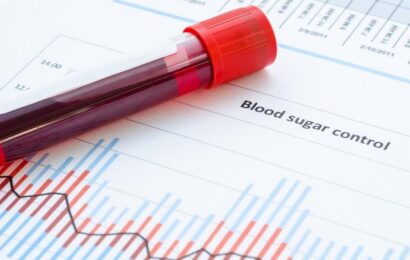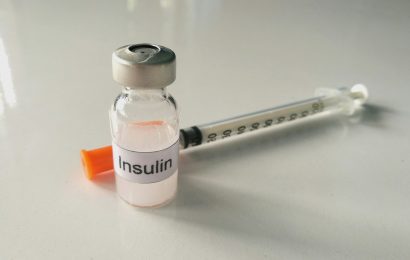If you ever have talked with a dietitian about food (and why wouldn’t you?), you’ve likely heard him say one or both of these famous catchphrases: “All foods can fit” or “everything in moderation.” To many people, including myself at times, these words start to sound like a broken record. But they really do ring true.
Over the years, when I’ve talked with people who have diabetes about food and nutrition, I’ve come across folks who have developed a rather extremist “all or nothing” attitude about food. It’s understandable, in one way, because what and how much you eat are so closely tied to blood glucose control. But I’ve never felt comfortable telling someone never to have, say, white rice or orange juice.
Certainly, many foods are more nutritious and wholesome than others, and these are the foods that should be the mainstays of a healthy eating plan. But to forever shun a warm slice of white bread? Or a scoop of chocolate chip ice cream? Or a handful of potato chips? I don’t think so. At least, not for me. So, this week’s posting is dedicated to foods that you may have written off as being “bad” or “to be avoided at any cost.” And if you have any you’d like to add to the list, please share!
Popcorn. I love popcorn, especially the “homemade” kind that you make in a pan on the stove drizzled with, yes, melted butter and some salt. Like many people, though, I’ve relegated myself to light-style microwave popcorn, and I’ve had my share of dry, air-popped popcorn sprinkled with powdered fake butter. Popcorn has its virtues, though. It’s a whole-grain food that just so happens to be a great source of fiber. Three cups of popcorn contain about 18 grams of carbohydrate and almost 4 grams of fiber. If you pop it in oil, the calories are about 165 for three cups. Drizzle on a teaspoon of melted butter or even some olive oil and you’ll add roughly another 36 calories. Not too shabby for a filling snack.
Potatoes. Some people avoid potatoes like the plague. Why? According to the glycemic index (a ranking of how quickly and how much carbohydrate foods raise blood glucose), potatoes top the chart. Understandably, no one with diabetes wants to see spikes in blood glucose after eating any food.
But what people sometimes forget is that potatoes are usually not eaten all by themselves. Chances are, you’d eat a potato with, say, a piece of chicken or beef, and you may even put a little bit of fat on your potato, such as margarine, butter, or sour cream. And you’d likely have some vegetables on your plate, too. Eating a high glycemic index food along with lower glycemic index foods and foods that contain fat can greatly lower the glycemic impact of any carbohydrate food. Plus, potatoes have quite a bit to offer in the nutrition department: they have practically no fat and sodium, they’re high in potassium, fiber, and vitamin C.
Coffee. I’ve written about coffee before and suffice it to say that it’s a beverage that’s bursting with antioxidants and other good things. Coffee may prevent Type 2 diabetes, skin cancer, gallstones, and Alzheimer disease. On the flip side, it can temporarily raise blood pressure, increase heart rate, and make it hard to sleep. Also, beware the cream, sugar, syrups and other “mix-ins” that can negate some of coffee’s health benefits.
Eggs. Eggs never seem to catch a break when it comes to health issues. It seems like we finally accepted the fact that, even though eggs contain cholesterol, they don’t raise blood cholesterol levels. A recent study, though, claimed that eating eggs is worse than smoking when it comes to atherosclerosis. However, the study that “supports” this claim was poorly done, in that it relied on self-reports from the participants.
Also, a whole bunch of other factors weren’t considered, such as the intake of saturated fat, fiber, sugar, and total calories. Exercise and other lifestyle factors weren’t taken into account, either. So, I’d write off this study. Eggs are rich in protein, iron, choline, and antioxidants. They also contain vitamin D. Eggs have been shown to help reduce hunger and sustain blood glucose. Plus, they’re a perfect little snack…and they’re virtually carb-free!
Pizza. Wait; don’t rush to call Domino’s just yet. Who doesn’t love pizza? But with all the gooey, melted cheese and fatty pepperoni, not to mention the number it can do on blood glucose levels, I know it’s a food that people have added to their “do not eat” list. However, if you make your own pizza (and it’s not that hard), it’s a fairly decent food. Start with a whole-grain crust (ready-made or dough). Spread on some pizza sauce (again, store-bought or homemade) — or even pesto sauce — and pile on the veggies, like sliced mushrooms, zucchini, broccoli, fresh tomatoes — anything you like. You can even add some slices of turkey sausage. Sprinkle on some part-skim mozzarella cheese and throw it in the oven. You’ll have most of the food groups represented here without all the saturated fat, calories, and sodium found in store-bought or restaurant-style pizza.
Butter. I won’t go so far as to say that butter is good for you. But, I’ve softened my stance on butter over the years. I realize that many people dislike margarine, either because of the taste, appearance, or the “unnaturalness” of it, and I get that. There’s nothing quite like a little butter on a slice of bread or a baked potato or drizzled on freshly popped popcorn.
Butter has its pitfalls: namely, it’s high in saturated fat (one pat of butter contains almost 3 grams of saturated fat). And all fat foods are high in calories. But, in an effort to look at the silver lining, butter can be low in sodium (if you choose the unsalted kind), it’s low in carbohydrate, and it just plain tastes good. So go ahead and use a little bit of butter in place of slathering on margarine. Sometimes, a little bit of the real thing is far better than a lot of something that is, at best, mediocre.




